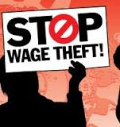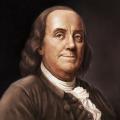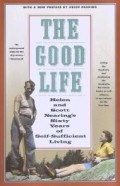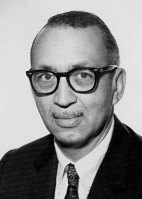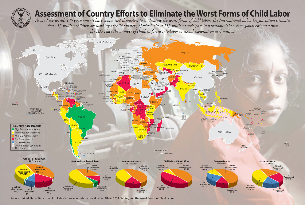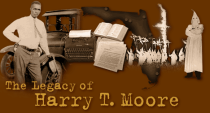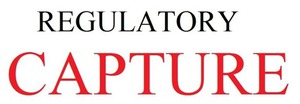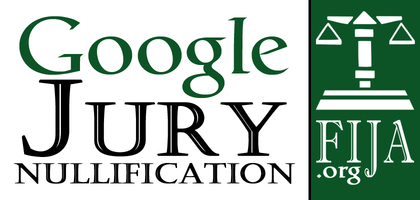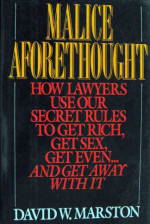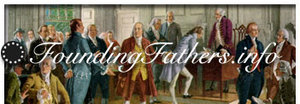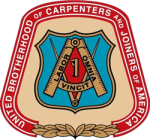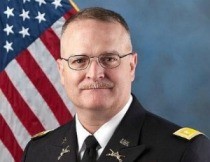Story of the Justice Network
Introduction by Neil J. Gillespie, founder of Justice Network
Updated February 20, 2024
Thirty-five years ago Wharton professor and lawyer Jordan L. Peiper was jailed on contempt for failing to account for $50,000 missing from a client’s trust fund. At
the time I was his client and a 33 year-old student at the Wharton Evening School, University of Pennsylvania,
Philadelphia.
The incident is described on page eighty of Malice
Aforethought, How Lawyers Use Our Secret Rules To Get Rich, Get Sex, Get Even...And Get Away With It, an exposé of the legal profession by David W. Marston, a Philadelphia lawyer, a former U.S. Attorney wrongly removed from office by President Jimmy Carter, and a graduate of the Harvard Law School. (Marston interview video)
Jordan lectured at Penn from 1973 through 1989. He was a popular instructor, enjoyed teaching, and was a nice guy. It is still hard for me to believe that Jordan would do anything wrong. The last
time I saw Jordan he was incarcerated at a minimum security facility near West Philadelphia. He was
disbarred in 1990. (#4152)
At the time I thought lawyer misconduct was rare. Then I moved to Florida after closing my car business in Pennsylvania. Florida seems to have more than its share of crooked lawyers.
A story in the St. Pete Times reported that attorney Dennis Correa stole $900,000 from a number of senior citizens. Correa was convicted and received probation. The outrageous twist was his next job, teaching ethics at St. Petersburg Junior College. The Times reported that Correa was part of a program called "ROPE", for Restoration of Professional Ethics. Correa was the second ROPE participant; the first was a lawyer too. All this came to my attention while I was a student in the school’s legal assisting program.
Hillsborough County Florida, the 13th Judicial Circuit, has had its share of scandal. The state attorney committed suicide. A grand jury presentment found that a judge had sex in chambers with a bailiff while court was held in the next room. Another judge had an affair with an employee of the clerk's office. A judge who spoke out about wrongdoing was defamed by critics. The judge, The Hon. Gregory P. Holder, spent $1.92 million clearing his name. The State of Florida ultimately reimbursed Judge Holder $70,000.
In 2000 I sued a "payday lender" as class reprentative of a failed class-action lawsuit. Florida Attorney General Robert Butterworth interviened in the case. In the end my own lawyers’ behavior turned out worse than that of the payday lenders. Subsequent attempts at justice, through The Florida Bar and the courts, only revealed further inadequacies in the justice system.
This website was started in response to breakdowns in the justice system. It is an attempt to turn lemons into lemonade. As an entrepreneur my approach is market driven where appropriate. Internet based legal service companies have been around for awhile,
but my idea - a work in progress - is different because it seeks to reduce the inefficiencies inherent in the legal system through the free market. This Justice Network is also engaged in advocacy,
education, and news gathering and dissemination.
Neil J. Gillespie, 2801 SW College Rd., Ocala, Florida 34474
Telephone: 352-581-2600, Email: Neil4Justice@yahoo.com
Letter to David W. Marston-Malice Aforet[...]
Adobe Acrobat document [2.8 MB]
The Psychological Price of
Entrepreneurship
Link to Inc. Magazine, By Jessica Bruder
The Psychological Price of Entrepreneurs[...]
Adobe Acrobat document [410.2 KB]
Post-secondary education
of Neil J. Gillespie
Left: Graduation Day, May 21, 1989, the Wharton School Evening Division, University of Pennsylvania, Philadelphia, PA.
Degree: Associate of Business Administration (ABA), cum laude, December 23, 1988.
Degree: Bachelors of Arts (BA), December 16, 1995, from The Evergreen State College, Olympia, Washington.
"Experience the world as a dynamic and a
changeable, interactive thing."
- Rachel Corrie (1979-2003)
American Peace Activist
Link to story, and top upper left of this page
FaceMattersOrg is a webpage in progress here on the Justice Network website created to increase awareness of "aggrieved life", the extraordinary costs, expenses, and other burdens incurred by a person with a congenital craniofacial anomaly (CFA) before and after the age of majority. Read more
Unanswered letter to United Nations, May-18-2014 re Zinnah Begum. Unfortunately, not all persons are born or created equal.
Correspondence with President Amy Gutmann, University of Pennsylvania about, inter alia, a fellowship for Dr. Chen Tao, MD, an Oral and Maxillofacial radiologist, on referral of Dr. Ningyi Li.
Photo Journal: Habilitation of Congenital Craniofacial Disorder
Historical Review of my CL&P and left lateral incisor, $11,775
College paper (1995): Psychosocial Implications of Congenital CFA
College paper (1995): Freud's theory of Infantile Sexuality for CFA
College paper (1998): Vocational Rehabilitation
Letter, Aleisa McKinlay, Director Florida DVR, February 11, 2014
Representation of Petitioner Florida DVR SC11-1622 Appendix-14
Letter July 15, 2013 to Florida Bar President Eugene K Pettis
Letter August 25, 2014 re Florida Unborn Victims of Violence Act
Letter March 31, 2015 to the AmeriFace Board of Directors
Letter April 14, 2015 to the AmeriFace Board of Directors
Poverty and Social Justice. When the powerful take everything worth having, little is left to trickle down.
More than half of American workers (51.4 percent) make less than $30,000 a year, according to wage statistics reported by the Social Security Administration. The average amount is $ 27,457 (2014). The U.S. Federal Poverty Guidelines for a family of four is $24,250.
Update: YouSue.org to NoSue.org
Fourteen years ago I started the Justice Network with the domain name YouSue.org. This name was chosen in the spirit of YouTube, the video-sharing website that
empowered ordinary people to produce and share video.
Through this website I have met folks from all over the country. Some of their stories are profiled here. Many have reached the conclusion that America’s justice system
is broken.
The official Justice Network Internet address is now NoSue.org. This reflects the sad truth that for most Americans the justice system is broken, just a parody of
justice. Reform or avoid American courts. Your life, health and wealth is at risk. But don’t just take my word, listen to the experts on this site.
Advocacy is a political process by an individual or group which aims to influence decisions within political, economic, and social systems and institutions...(Wikipedia). Also see:
- Justice Network letter to former judge Claire K Luten, about the theft by Denis Dale Correa of over $900,000 from his elderly clients, January 16, 2012, sentence of probation.
- Dennis Dale Correa webpage, Justice Network
- Justice Network Editorial: DeMichelle v. Laurato. Lawyer won’t pay court reporter, Florida Bar finds no wrongdoing.
Education in its general sense is the process of formally or informally facilitating learning, by which knowledge, skills, values, beliefs, and habits of a group of people are transferred to other people, through storytelling, discussion, teaching, training, or research...(Wikipedia). See for example:
- American Civil Rights Movement, Justice Network
- The Holocaust: Role of German and American Law
- Mohamed Bouazizi, started the Arab Spring
- Alzheimer's and Elder Care, Justice Network
- FaceMatters, Justice Network
- Healthcare, Justice Network
- The Florida Bar, an unincorporated association
News Gathering and Dissemination. Developments in digital multimedia continue to impact on societies across the world. This influence is wide ranging – from public news media, through marketing, entertainment and
education to hobbies like photography and the way we create, edit and share information...
- See Fair v Hodges, a meritorious 1971 citizen challenge to the investiture US Judge William Terrell Hodges.
Fighting Injustice. John Rawls claims that "Justice is the first virtue of social institutions, as truth is of systems of thought." I would further define
justice as the right to petition the government for a fair and effective redress of grievances. See, Justice, Wikipedia.
- Request for Senate Hearing, Nominee Arthur Lee Bentley for U.S. Attorney, September 4, 2014 to the Honorable Patrick J. Leahy, Chairman, Senate Judiciary Committee, et al.
- Letter January 12, 2015 to the House Judiciary Committee, Chairman Bob Goodlatte (R-Va.), Ranking Member John Conyers (D-Mich.), Re: Judicial Conduct & Disability, U.S. Eleventh Circuit, Middle District FL, SCOTUS
- No response from Chief Justice John Roberts; corrupted Supreme Court Petitions No. 12-7747 and No. 13-7280 posted Sunday, August 17, 2014.
- American Bar Association (ABA) letter of Jeanne Gray February 19, 2013, Re Audit Florida Lawyer Discipline.
Not only are the poor disproportionately exploited, the very fact of being poor creates extraordinary vulnerability to countless major and minor daily roadblocks. Recent research by Sendhil Mullainathan of Harvard and Eldar Shafir of Princeton demonstrates that there is a strong connection between scarce resources and cognition: The more a person struggles financially, the less he or she can channel brain processes to completing other tasks. When you can’t make ends meet, the weight of worry occupies a large portion of the mind. Read more
Composite of articles and news stories, 87p
Professor Sendhil Mullainathan on Scarci[...]
Adobe Acrobat document [6.8 MB]
Alumni Essay: Saving Capitalism From a Painful Demise
Wharton Magazine
By Anthony W. Orlando
Winter 2015 Issue
Economic inequality is the great business challenge of our time.
American business leaders rallied around Franklin Delano Roosevelt in 1932 during his candidacy for the presidency, after which he immediately embarked on the most progressive legislative agenda in U.S. history to tackle the Great Depression. From today’s vantage point, it may seem surprising that titans of industry, executives from General Electric to Standard Oil to IBM, not only contributed to Roosevelt’s campaign but helped author many of his famous New Deal reforms. To the men who ran these companies, it was a simple matter of fiduciary responsibility—to current shareholders and to future ones—that they should ensure a more equitable distribution of prosperity, lest their own wealth be dashed to bits on the jagged rocks of a shrinking economy.
Today, we face a similar predicament. The great challenge of business in our time is reversing the destabilizing threat of inequality. While at first this may seem anathema to our profit-maximizing mission, distribution of income lies at the very heart of sustainable capitalism. read more
Katherine Austin Fitts, WG78 Solari.com
Solari.com blog
Catherine Austin Fitts' understanding of the global financial system and the inner workings of the Wall Street-Washington axis are unparalleled. Catherine earned a MBA from Wharton (WG78) and is a former U.S. Assistant Secretary of Housing/Federal Housing Commissioner. Catherine was one
of the first to warn of an approaching housing bubble. Her prediction that a 'strong dollar policy' would ultimately lead to a weakened federal credit is currently being proven correct.
- Narco-Dollars For Dummies: How The Money Works In The Illicit Drug Trade, by Catherine Austin Fitts
- Catherine Austin Fitts, Wikipedia
Katherine Austin Fitts Solari.com.
To Fear the Fed or Not, Wharton Magazine Winter 2016
Wharton Magazine
By Peter Conti-Brown
The Federal Reserve’s authority over the financial system and the money supply is expansive. That power deserves a better public understanding—even
engagement.
There is an old story, perhaps apocryphal, in which a newly appointed member of the Board of Governors of the U.S. Federal Reserve System was greeted by the Fed Chair with an apologetic explanation of the new governor’s status. The chair predicted that when the man introduced himself back home to his friends and family as a "governor of the Federal Reserve," they were likely to think he was the administrator of the U.S. government’s unexplored Western forests.
There was a time when that story was funny. The Fed used to be an obscure, backwater government agency. The general public didn’t really know what the Fed was about—and probably didn’t much care. Even for those who paid attention to the economy, until roughly the early 1960s, the prevailing view was that the president and his administration were the first and last stop for economic policy.
Central banking was the hinterland; fiscal policy—the stuff of taxes and budgets and spending and deficits—the seat of power.
Bankers cared about the Fed’s obscure activities. The rest of the country wasn’t paying attention.
That story used to work. It doesn’t any more. Today, it’s not just bankers who are paying attention. Over the last 30 years—and especially since the global financial crisis of 2008—the Fed has become the target of an extraordinary proliferation of scrutiny, praise and condemnation. Read more
The Power and Independence of the Federal Reserve, by Peter Conti-Brown. Princeton University Press. Link to Introduction PDF.
The President, Fox News and the Poor
The New York Times, Opinion
By Charles M. Blow
May 14, 2015
This week, during a panel discussion on poverty at Georgetown University, President Obama lambasted the media, and in particular Fox News, for creating false, destructive narratives about the poor that paint them broadly as indolent and pathological.
"Over the last 40 years, sadly, I think there’s been an effort to either make folks mad at folks at the top, or to be mad at folks at the bottom. And I think the effort to suggest that the poor are sponges, leeches, don’t want to work, are lazy, are undeserving, got traction."
He continued:
"And, look, it’s still being propagated. I mean, I have to say that if you watch Fox News on a regular basis, it is a constant menu — they will find folks who make me mad. I don’t know where they find them. [Laughter.] They’re like, I don’t want to work, I just want a free Obama phone — [laughter] — or whatever. And that becomes an entire narrative — right? — that gets worked up. And very rarely do you hear an interview of a waitress — which is much more typical — who’s raising a couple of kids and is doing everything right but still can’t pay the bills." read more
Scientists Find Alarming Deterioration In DNA Of The Urban Poor
Huffington Post
By Nico Pitney
May 8, 2015
The urban poor in the United States are experiencing accelerated aging at the cellular level, and chronic stress linked both to income level and racial-ethnic identity is driving this physiological deterioration.
These are among the findings published this week by a group of prominent biologists and social researchers, including a Nobel laureate. Dr. Arline Geronimus, a visiting scholar at the Stanford Center for Advanced Study and the lead author of the study, described it as the most rigorous research of its kind examining how "structurally rooted social processes work through biological mechanisms to impact health."
What They Found
Researchers analyzed telomeres of poor and lower middle-class black, white, and Mexican residents of Detroit. Telomeres are tiny caps at the ends of DNA strands, akin to the plastic caps at the end of shoelaces, that protect cells from aging prematurely. Telomeres naturally shorten as people age. But various types of intense chronic stress are believed to cause telomeres to shorten, and short telomeres are associated with an array of serious ailments including cancer, diabetes, and heart disease.
Evidence increasingly points to telomere length being highly predictive of healthy life expectancy. Put simply, "the shorter your telomeres, the greater your chance of dying." read more
Journal of Health and Social Behavior-20[...]
.pdf File [574.4 KB]
Bill Moyers Journal with John Bogle-NYT [...]
Adobe Acrobat document [197.8 KB]
Wage theft, Wikipedia
Wage theft is the illegal withholding of wages or the denial of benefits that are rightfully owed to an employee. Wage theft, particularly from low wage legal or illegal immigrant workers, is common in the United States, according to some studies.[1][2] Wage theft can be conducted through various means such as: failure to pay overtime, minimum wage violations, employee misclassification, illegal deductions in pay, working off the clock, or not being paid at all. These violated rights have been guaranteed to workers in the United States since 1938 by the Fair Labor Standards Act (FLSA). read more
- Attorney General Eric T. Schneiderman, obtained $2M judgment against Papa John's franchisee. AG video link
- An Epidemic of Wage Theft Is Costing Workers Hundreds of Millions of Dollars a Year, Economic Policy Institute
- More Workers Are Claiming ‘Wage Theft’, New York Times
- Papa John’s To Pay Delivery Workers $2M For Wage Theft
- Cuomo orders emergency measures for nail salon workers
- A.G. Schneiderman And DOI Commissioner Peters Announce Arrest Of Five Public Works Contractors Charged With Underpayment Of Nearly $1 Million In Wages To Workers
The Wharton School, University of Pennsylvania
J. Larry Jameson, MD, PhD
Interim President, University of Pennsylvania
J. Larry Jameson, M.D., Ph.D., was named Interim President of the University of Pennsylvania on Dec. 12, 2023. He had previously served as Executive Vice President of the University of Pennsylvania for the Health System and Dean of the Raymond and Ruth Perelman School of Medicine since July 1, 2011. Read more
Medical School Dean Is Chosen to Lead Penn as Interim President
Medical School Dean Is Chosen to Lead Penn as Interim President
The New York Times
By Campbell Robertson and Michael Corkery, Dec. 12, 2023
Dr. Larry Jameson was selected after M. Elizabeth Magill resigned amid an uproar over her statements about campus antisemitism.
Dr. J. Larry Jameson, dean of the medical school at the University of Pennsylvania, was named the institution’s interim president on Tuesday, three days after his predecessor resigned amid an uproar over how elite colleges have handled antisemitism on campus.
Dr. Jameson replaces M. Elizabeth Magill, who resigned on Saturday after an intense campaign by donors and alumni who said she did not do enough to protect Penn’s Jewish students. Read more
Penn Names Dr. J. Larry Jameson as Inter[...]
Adobe Acrobat document [94.3 KB]
Amy Gutmann, 8th President of the University of Pennsylvania
8th President of the University of Pennsylvania
In office July 1, 2004 – February 8, 2022
Amy Gutmann (born November 19, 1949) is an American academic and diplomat who has served as the United States Ambassador to Germany since 2022. She was previously the president of the University of Pennsylvania from 2004 to 2022, the longest-serving president in the history of the University of Pennsylvania. (Wikipedia)
Dr. Amy Gutmann was President and Christopher H. Browne Distinguished Professor of Political Science in the School of Arts and Sciences and Professor of Communication in the Annenberg School for Communication University of Pennsylvania
The 8th President of the University of Pennsylvania, Amy Gutmann is an internationally recognized leader in higher education. Since becoming president in 2004, she has been an outspoken advocate for increased access to higher education, and has led Penn to become the largest university to establish an all-grant policy for all undergraduate students who qualify for financial aid. A first-generation college student herself, President Gutmann has significantly expanded the number of students from low-income, middle-income, and first-generation college families attending the University. She has pushed Penn to the forefront in civic engagement, as exemplified by the 2011 opening of Penn Park, a 24-acre urban oasis connecting the Penn campus to Center City Philadelphia and surrounding neighborhoods.
- Amy Gutmann Wikipedia
Lin-Manuel Miranda to Speak at Penn’s 260th Commencement
Penn News
January 19, 2016
Lin-Manuel Miranda, a 2015 MacArthur Foundation Award recipient and the Tony- and Grammy-award winning composer and lyricist of the Broadway show "In the Heights" and of "Hamilton," a groundbreaking musical rooted in hip-hop and intertwined with R & B, jazz, and pop, will deliver the address at the 2016 University of Pennsylvania Commencement on Monday, May 16. Read more
Biden and Trump to attend College of Arts and Sciences graduation
The Daily Pennsylvanian
By Charlotte Laracy 05/04/16
At this year's College of the Arts and Sciences graduation, two influential political figures will be in attendance: 1968 Wharton graduate and presumptive Republican presidential nominee Donald Trump and Vice President Joe Biden.
But these dignitaries won't be there to address the graduates; they'll simply be sitting in the crowd of parents and grandparents.
Trump's daughter Tiffany and the vice president’s granddaughter Naomi are among the 1,500 students graduating from the College on May 15.
Security will be especially tight at the event. Families are recommended to arrive two hours early to get through security at Franklin Field for the 6:30 p.m. graduation. The Division of Public Safety told Philly.com that Penn Police will be working with the Secret Service and city police to prepare for the event, which could include protesters. Read more
Archive - Penn's 2015 Commencement Ceremony
Samantha Power, the United States permanent representative to the United Nations, a member of President Obama’s cabinet, a Pulitzer Prize-winning author and a human-rights advocate will present the main Commencement address and will receive an honorary Doctor of Laws degree. read more
2015 Commencement Address by President Amy Gutmann
2015 Commencement Address by Ambassador Samantha Power
WHEN: Monday, May 18, 2015, 8:30 a.m., at Franklin Field, 33rd and Spruce Streets. Additional information
Ben Franklin - Founder, University of Pennsylvania
University of Pennsylvania Wikipedia
Not to be confused with Penn State.
The University of Pennsylvania (commonly referred to as Penn or UPenn) is a private, Ivy League, research university located in Philadelphia. Incorporated as The Trustees of the University of Pennsylvania, Penn is one of 14 founding members of the Association of American Universities and one of the nine original Colonial Colleges. Penn has claims to being the oldest university in the United States of America.[6]
Benjamin Franklin, Penn's founder, advocated an educational program that focused as much on practical education for commerce and public service as on the classics and theology. The university coat of arms features a dolphin on the red chief, adopted directly from the Franklin family's own coat of arms.[7] Penn was one of the first academic institutions to follow a multidisciplinary model pioneered by several European universities, concentrating multiple "faculties" (e.g., theology, classics, medicine) into one institution.[8] It was also home to many other educational innovations. The first school of medicine in North America (Perelman School of Medicine, 1765), the first collegiate business school (Wharton School of Business, 1881) and the first "student union" building and organization, (Houston Hall, 1896)[9] were all born at Penn. Read more
The Pennsylvania Gazette
Vol. 101, No. 2
November December 2002
Safe Places: As the diversity of Penn’s student population has increased, so have the resources to serve different groups—but not without struggle.
Joseph Wharton - Founder of the Wharton School
Stamps; For The Man Who Started Business Education
The New York Times
By Samuel A. Tower
June 21, 1981
Excerpt: Joseph Wharton was a man of wealth who, like many of the nabobs of his time, was also a philanthropist and a
supporter of causes - in his case education and a protective high tariff. He was born in Philadelphia, a descendant of a Thomas Wharton who came to America in the late 1600's.
He was barely in his twenties when he became engaged in metallurgy, one of his primary interests. This led to a company for the first commercially successful production of spelter - a crude metallic
zinc - in America.
In 1860 he built in Bethlehem, Pa. a spelter works of 16 Belgian furnaces, in which for the first time silicate of zinc was reduced to metal on a large scale. He
introduced anthracite instead of bituminous coal for reducing the zinc in retorts made from American clay. The spelter was of superior quality and profitable, firmly establishing this industry in the
U.S.
In 1873, he acquired some abandoned nickel ore deposits in Pennsylvania’s Lancaster Country and established a plant for the production of metallic nickel and copper alloys. He was the first to make a
pure malleable nickel that could be worked like iron and to use it to make magnets and compasses and countless other articles. His nickel was heralded for its purity and uniformity; for a number of
years he produced one-sixth of the entire world output.
Along the way, in the late 1850's, he became a founder of an iron company that became the Bethlehem Iron Corporation and, in time, the giant Bethlehem Steel Company. He also had interests in pig iron
furnaces, railroads, coal mines and coke plants.
Joseph Wharton gave large sums of money for educational advancement, and the Wharton School was not his first notable venture. He was one of the founders of Swarthmore
College, which came into being in 1864 and was one of the earliest co-educational institutions in the country. He headed the school's board of managers for more than a quarter of a century, helped
set up its scientific laboratory and, on his own, set up a chair of history and political economy. This may have been the seed for his second major educational contribution.
In 1881, he gave the University of Pennsylvania a gift of $100,000, subsequently increased to $500,000, for the establishment of a school offering young men "an adequate education in the principles
underlying successful civil government, and a training suitable for those intending to engage in business or to undertake the management of property. "
The Wharton School of Finance and Political Economy established under the terms of the gift was the first of its kind to be part of an educational institution anywhere in the world. It launched a new
educational discipline that today draws many of the most gifted young men and women in the nation.
There were only 13 students in Wharton's first class, and not many more than 100 after a decade. The education they got was far different from the management education of today. Joseph Wharton
believed that the classic languages and major foreign tongues provided a solid footing for learning, so the students learned Latin as well as French and German.
The chief business courses were bookkeeping, drawing up contracts, commercial law, trust management and banking "routine." The typewriter was not yet a common business tool, so one of the principal
courses was penmanship to make sure that what the students learned could be applied with a readable hand.
At the turn of the century, in 1898, came the world's second and third business schools, set up by the University of California and the University of Chicago. By 1901, they were joined by business
schools at the University of Wisconsin, Dartmouth and New York University. The Harvard Business School was established in 1908. By then, business education, both at the undergraduate and graduate
levels, was well on its way to becoming an important component of American education. Read more
Joseph Wharton was not a free-trader, and lobbied for tariffs to protect his nickel business. Read more in the biography Joseph Wharton: Quaker Industrial Pioneer By Willard Ross Yates. (Lehigh University Press, 1987)
Joseph Wharton
Wikipedia
Joseph Wharton (March 3, 1826 – January 11, 1909) was an American industrialist. He was involved in mining, manufacturing and education. He founded the Wharton School at the University of Pennsylvania, co-founded the Bethlehem Steel company, and was one of the founders of Swarthmore College.
Early years
Wharton was born in Philadelphia in 1826, the fifth child of ten in a liberal Hicksite Quaker family. His parents, William Wharton and Deborah Fisher Wharton, were both from prominent early American immigrant families of Quaker descent. Interestingly, both of Wharton's grandmothers were named Hannah and were from Newport, Rhode Island. Wharton's maternal grandfather, Samuel R. Fisher ran a prosperous mercantile business and shipping packet line between Philadelphia and London, and his grandmother Hannah Rodman was a descendant of Thomas Cornell, the ancestor of Ezra Cornell who founded Cornell University. Wharton's youth was spent in the family's house near Spruce and 4th Streets in downtown Philadelphia and at the country mansion "Bellevue". Wharton's father was a typical gentleman, and did not hold a regular job because he had several illnesses, but oversaw his estate, served on the Philadelphia School Board, and was active with his wife Deborah in the Hicksite ministry. From their country estate, the family often went to the nearby Schuylkill River, visited neighboring estates such as Deborah's grandfather Joshua Fisher's The Cliffs, and went on weekend horse and carriage excursions to the countryside surrounding Philadelphia, sometimes attending the smaller Quaker Meetings. Read more
Wharton Alumni - 125 Influential People and Ideas
Wharton Alumni Magazine 125 Influential People and Ideas. Since its founding, the School has graduated nearly 100,000 business leaders, individuals who have elevated disciplines, developed economic models, influenced capital markets, spread prosperity, and built companies. Together, these stories create a picture of the diversity, sweep, impact, and influence of Wharton over the past 125 years. Read more
Richard Robert Wright Sr., WEv'21 Wharton Evening Div
Richard Robert Wright Sr., WEv'21
Educator, Banker, Civil Rights Leader
Wharton Evening School Alum Richard Wright successfully managed his bank through the Great Depression.
Wright was born into slavery on May 16, 1855, in a log cabin six miles from Dalton, Georgia, Wikipedia
In 1876, Wright was named valedictorian at Atlanta University’s first commencement ceremony. He would study at a number of other institutions over his lifetime including Harvard, Columbia, the University of Chicago, Oxford University, and the University of Pennsylvania. BlackPast.org
Wright was named one of the Wharton School's 125 influential alumni and faculty in this special Wharton Alumni Magazine
When retired Union Civil War soldier, General Oliver Otis Howard, visited an Atlanta classroom, a school boy named Richard Robert Wright told him to pass a potent message to curious Northerners. "Sir, tell them we are rising," he insisted. Born a slave in 1855 near Dalton, GA, young Wright had just finished a 200-mile trek with his mother to the abandoned railway-car schoolhouse to meet the general.
Those words served as Wright’s lifelong motto. He would commence "rising" and become a trailblazing black intellectual, military officer, educator, politician, civil
rights advocate, and bank entrepreneur following his education at some of the most elite U.S. colleges, attending Wharton at age 67.
Opening a bank was a retirement career for Wright. He had already founded and led Savannah State College from 1891 to 1921. Moving to Philadelphia in 1921 he opened the Citizens and Southern Bank and
Trust Company, the only Northern black-owned bank at the time. Thanks to his late-life Wharton training, the young bank withstood the Depression and had assets of $5.5 million when it was sold in
1957, a decade after Wright’s death.
In his youth, Wright was a major in the Spanish-American War and the first black to serve as Army paymaster. Throughout his life, he inspired others to great heights by initiating a black
intelligentsia movement. Wright’s son, Richard Robert Wright Jr., was one of the first blacks to earn a PhD at Penn in sociology, a president of Wilberforce University, and a leading theologian in
the African Methodist Episcopal Church. Wright Jr.’s daughter, Ruth Wright Hayre, became a legendary educator and Philadelphia school board president after earning a doctorate from Penn, joining her
father as the University’s first black father and daughter doctoral recipients.
"I became familiar with Major Wright by my association with Dr. Hayre," said Penn graduate and U.S. Congressman Chaka Fattah, an admirer of Wright. "He was a tenacious activist who spent a great
amount of time rising above matters that would have deterred others."
One of Wright’s legacies is National Freedom Day, February 1, a holiday Wright initiated to recognize the day President Abraham Lincoln signed the 13th Amendment, freeing all U.S. slaves. The holiday
was established by a proclamation by President Harry Truman, and continues as the first day of Black History Month.
Wright, Richard R. (Richard Robert), b. 1848
Documenting the American South
A beacon to oppressed peoples everywhere
Major Richard R. Wright Sr., National Freedom Day, and the Rhetoric of Freedom in the 1940s
A beacon to oppressed peoples everywhere[...]
Adobe Acrobat document [3.7 MB]
Richard R Wright and the National Negro Bankers Association: Early Organizing Efforts Among Black Bankers, 1924-1942
Richard R Wright and the National Negro [...]
Adobe Acrobat document [1.6 MB]
‘History of the Slave South’ Online Course by Stephanie McCurry For reference only. The course has ended. YouTube video.
Scott Nearing, Wharton Professor, 1909 - 1915
Scott Nearing, Wharton Professor
A Radical Who Laid The Groundwork
for the Tenure System
"If I am rich and you are poor," Nearing wrote, "both of us are corrupted by inequality."
Also see The Good Life Center at Forest Farm
The tenure system allows established professors to pursue research topics without worrying where their results take them. But this system exists, in part, because of
one Wharton professor who was found to have gone "too far."
Scott Nearing was brilliant, without doubt, influencing generations over his century-long life by advocating what he believed to be a back-to-nature lifestyle of economic and social purity. "If I am
rich and you are poor," Nearing wrote, "both of us are corrupted by inequality."
Nearing matriculated to Penn in 1901, where he was influenced by Simon Nelson Patten, the great progressive economist and
director of Wharton School from 1896 to 1912. Nearing earned a doctorate in economics in 1909, began teaching sociology at Wharton, and became immersed in progressive social causes in
Philadelphia.
Nearing soon became one of the "Wharton Eight," a group of faculty who believed that they "should make a contribution not only to our students and the University but also to the society at large," in
Nearing’s words. Patten described Nearing as one of Penn’s "most effective men, a man of extraordinary ability, of superlative popularity and a man who, to my mind, exerted the greatest moral force
for good in the University." He also noted that Nearing "had the largest class in the University — there were 400 in his class — and no one could have done his work better."
Thus Nearing was shocked in 1915 when he was the only assistant professor with a favorable recommendation from the faculty not to be rehired.
His outspoken views against child labor and other progressive causes had run afoul of Penn’s trustees, who thought he was a dangerous influence on his many followers.
"I do not believe in muzzling any member of the faculty," said the University Provost. "I do believe, however, that no man may go too far."
Nearing won litigation concerning his dismissal, giving a significant victory to academic freedom — one step toward the creation of the tenure system.
By 1917 Nearing was fired from the University of Toledo as an administrator and professor due to his opposition to America’s World War I involvement. In March 1918 he was indicted, but later
exonerated by the federal government via the Espionage Act for his antiwar writing. In the 1920s he joined the Communist party until he was expelled from that organization for being too radically
independent.
Nearing later espoused a simple lifestyle of abstaining from products and economic practices that he believed hurt society. Among his 50 books was the classic Living the Good Life, co-authored with his wife Helen in 1954 and republished in 1970, inspiring the countercultural movement of the time. Nearing died in 1983 shortly after his 100th birthday.
Wikipedia
Scott Nearing (1883-1983) was an American radical economist, educator, writer, political activist, and advocate of simple living.
Nearing was born in Morris Run, Tioga County, Pennsylvania, the heart of the
state's coal country…
...Nearing graduated from high school in 1901 and enrolled in the University of Pennsylvania Law School, "where corporate bias so violated his idealism that after one year he quit." Instead he studied oratory at Temple University in Philadelphia and enrolled in the Wharton School of Business of the University of Pennsylvania, where he immersed himself in the emerging science of economics. At the Wharton School, Nearing was deeply influenced by Simon Nelson Patten, an innovative and unconventional educator and founding father of the American Economic Association.[8]...
...Nearing distinguished himself as a "Wharton man" during the progressive era, one of the proverbial "best and brightest" trained in practical economics to be readied for a place as a responsible leader of the community.[9] In the words of another of his students, Patten taught innovative thinking—"making use of creative intelligence to master new situations irrespective of received dogma."[10] Nearing seems to have found these new intellectual tools for potential social change to be exciting and liberating. He completed his undergraduate program in just three years, while simultaneously engaging in campus politics and competitive debate.[8]
Nearing received his BS degree from the University of Pennsylvania in 1905 and his PhD in Economics in 1909. From 1905 to 1907, he served as the Secretary of the Pennsylvania Child Labor Committee, a volunteer society working to solve the child labor problem in the state.[11] From 1908 until 1915 while living in Arden, Delaware, Nearing taught economics and sociology at the Wharton School and Swarthmore College, authoring a stream of books on economics and social problems.[12]...Read more
Also see The Good Life page here on the Justice Network
Edmond Bordeaux Szekely, Deborah Szekely, Rancho La Puerta, The Golden Door, A Congressional Management Guide, Waiter, There’s a Guinea Pig in My Soup NY Times, Krishnamurti, Siempre Mejor! Krishnamurti Foundation, Krishnamurti Foundation America.
In 1917 Scott Nearing wrote ‘The Great Madness’ that blamed US involvement in WWI on J.P. Morgan bank and other corporate interests.
Sound familiar? Nearing's 1917 review of the ominous events from 1914 to 1917 that enabled the private interests of large corporations ("plutocracy") to propel the U.S. into World War I for their material profit, thereby permanently degrading and perverting U.S. democracy for the 20th century. Nearing’s analysis shows how the business class gained control of the inner workings of the United States government and were thus able to meld nationalist patriotism into a military preparedness which finally leads to an open declaration of war. Read more
- The Good Life Center, Scott & Helen Nearing's publications
- The Great Madness, by the Information Clearing House
- Scott Nearing biographical sketch by Ryan Eroh
- New England Historical Society, The Great Madness
- Counterpunch Scott Nearing on War
- Swarthmore College Scott Nearing Papers
- Chronological List of Books and Pamphlets by Scott Nearing
- Villanova University The Economics of Peace: World War I and Scott Nearing’s Radical America
The Great Madness, Scott Nearing-1.pdf
Adobe Acrobat document [3.1 MB]
The Good Life: Helen and Scott Nearing's Sixty Years of Self-Sufficient Living
"Helen and Scott Nearing are the great-grandparents of the back-to-the-land movement, having abandoned the city in 1932 for a rural life based on self-reliance, good health, and a minimum of cash...Fascinating, timely, and wholly useful, a mix of the Nearings' challenging philosophy and expert counsel on practical skills."--Washington Post Book World.
Mother Earth News
Living the Goof Life with Scott and Hele[...]
Adobe Acrobat document [117.2 KB]
Raymond Pace Alexander, W’20
Pioneering Lawyer, Judge, and Civil Rights
Leader
Raymond Pace Alexander, W’20
Raymond Pace Alexander, Wharton’s first black graduate, challenged many segregated institutions in the Philadelphia area, making an indelible impression on the city and the profession of law.
Alexander beat incredible odds as a young boy. His mother died when he was 12, and Alexander was forced to support himself. He managed to maintain stellar academic credentials and enrolled with a scholarship, graduating in 1920.
After Wharton, Alexander graduated from Harvard Law School in 1923. That year he married Sadie Tanner Mossell, who in 1927 became the first black woman to earn a law degree from Penn, where her father Aaron Albert Mossell was the first black graduate. She was also the first African-American woman to receive a PhD in economics, also obtained at Penn.
The founder of Philadelphia’s premier black law firm, Raymond Alexander was not content with breaking barriers. He and his wife both landed top legal and political jobs in the city. He was president of the National Bar Association from 1933 to 1935, and won election to the Philadelphia city council from 1951 to 1958. In 1959, Alexander became the first black judge on the Common Pleas Court of Philadelphia.
While his highest profile roles were as counsel for the NAACP (National Association for the Advancement of Colored People) [also see NAACP LDF] and other clients, he first gained notice as a plaintiff. In 1924, he was excluded from a Chestnut Street theater showing The Ten Commandments. He took the theater owners to court and won their pledge never to discriminate again.
He made headlines later for his involvement in other landmark cases. In the early 1930s, he took two Chester County school districts to court after they tried to establish racially segregated school systems. His victory in that case marked an end to de jure segregation in Pennsylvania schools. In the Trenton Six Case of 1948, he eventually cleared black defendants falsely accused of killing a white shopkeeper — a case that Alexander won on appeal with the help of attorney Thurgood Marshall, the future first black U.S. Supreme Court justice. Alexander died in 1974. Read online
Raymond Pace Alexander Wikipedia
William J. Brennan Jr., W’28, HON’57
Architect of U.S. Protections for
Individual Rights
William J. Brennan Jr., W’28, HON’57
As the intellectual leader of the movement towards expanded individual and civil rights, Associate Justice of the U.S. Supreme Court William Brennan fundamentally changed the court’s approach toward the Constitution. After his death in July 1997, he was called "probably the most influential justice of the century" by Justice Antonin Scalia. Brennan served the court for a near record-breaking three decades.
When Brennan graduated with a degree in economics in 1928 from Wharton, the personable Newark, NJ, young man embarked on a journey that would lead him to become one of the most revered and dominant U.S. Supreme Court justices.
After law school at Harvard, Brennan entered the Army during World War II, rising to Colonel in 1945. Between 1949 and 1951 he was a judge on the New Jersey Superior Court and then that state’s Supreme Court before being appointed by President Dwight Eisenhower, a Republican, in 1956 to the U.S. Supreme Court.
Brennan was the quintessential liberal jurist for causes ranging from civil rights to opposing the death penalty.
Harvard Law Professor Lawrence Tribe wrote that Brennan was the "principal architect of the nation’s system for protecting individual rights." He continued, "Intellect alone could never have achieved so much, though Brennan’s intellectual brilliance and analytical acumen were indispensable. What drove him were passion and compassion, insight and empathy, and a dream of a Constitution of, by, and for the people."
By the time he retired in July 1990, Brennan had ruled in 1,360 opinions, surpassing all but one justice in the court’s history. His vital cases included New York Times v. Sullivan, which established the actual malice standard of which press reports could be considered to be defamation and libel (allowing free reporting of civil rights campaigns in the southern U.S.), and Furman v. Georgia, which ruled application of the death penalty required consistency (resulting in the suspension of the death penalty from 1973 to 1976). William J. Brennan Jr. Wikipedia
William J. Trent Jr., WG’32
Architect of the United Negro College
Fund William J. Trent Jr., WG’32
The architect of the United Negro College Fund (UNCF), William Trent Jr. guided the trailblazing group during the turbulent Civil Rights years.
As the first executive director from the organization’s start in 1944 until 1964, Trent raised $78 million for historically black colleges so they could become "strong citadels of learning, carriers of the American dream, seedbeds of social evolution and revolution."
Born in 1910 in Asheville, NC, and raised in Atlanta, Trent was the son of an early organizer of the NAACP and president of Livingstone College, a historically black college in Salisbury, NC, where the younger Trent earned his bachelor’s degree. He was one of the first black MBA students at Wharton, where he studied insurance under Solomon Huebner. Graduating in 1932 in the midst of the Depression, he later described his possibilities of securing employment in American industry as "virtually nil."
He devoted himself to making opportunities for others. He joined Livingstone College as a professor of economics, and then served as professor and dean of education at Bennett College in Greensboro, NC. In 1938, he became adviser of Negro Affairs to the Public Works Administration and a race relations officer with the Federal Works Agency under President Franklin D. Roosevelt.
In 1944 Trent joined with Tuskegee Institute (NPS link) President Frederick D. Patterson and Mary McLeod Bethune to found the UNCF, a nonprofit that united college presidents to raise money collectively through an "appeal to the national conscience."
Trent was an obvious choice for the executive director’s position, where he became a leading advocate of desegregation. In 1956 Trent announced that all of the fund’s colleges were open to qualified applicants of any race to serve as "islands of democratic participation, both white and Negro citizens can come together in full, frank discussion."
Trent drew the support of business tycoons and even U.S. presidents, including Roosevelt, John F. Kennedy, who as a senator donated the profits from his book Profiles in Courage to the UNCF, and George H.W. Bush, who Trent recruited as Yale’s UNCF campus coordinator when the future president was just an undergraduate.
Trent died in 1993. William J. Trent Jr./UNCF, Wikipedia
Frances Perkins, U.S. Secretary of Labor, 1933-1945
Frances Perkins, Force Behind The Social Security Act Attended Wharton 1918-1919
Perkins helped establish unemployment compensation, the minimum wage, abolition of child labor, the creation of a federal employment service, and the Social Security Act
A staunch protector of workers’ rights, Frances Perkins became America’s first female cabinet member as Secretary of Labor. Perkins was a trailblazer, working with
President Franklin D. Roosevelt to design many New Deal initiatives, including the act that established the Social Security system in 1935.
Born in 1882 in Boston, Perkins learned to be assertive in a so-called man’s world while attending the predominantly male Worcester Classical High School. After graduating from Mount Holyoke College
in 1902, Perkins worked for several social-service groups.
By 1910 Perkins moved to New York City to continue her studies at Columbia. The next year she witnessed the infamous Triangle Shirtwaist Factory fire. The exits were locked, the conditions
deplorable, and 146 young female garment workers died, many jumping to their deaths in an attempt to escape the flames.
The scene deeply affected her, galvanizing her as a labor and women’s rights activist. In 1918 she began her years of study in economics and sociology at Wharton. While in Philadelphia, she
participated in the women’s suffrage movement and gave fervent street-corner speeches while helping poor immigrant girls.
She became New York’s Industrial Commissioner when Roosevelt became governor in 1929. Later elected president, he called her again to be Secretary of Labor in 1933. She was instrumental in changing
women’s work conditions, and established labor laws and innovation now taken for granted: unemployment compensation, the minimum wage, abolition of child labor, the creation of a federal employment
service, and "old-age insurance" — created through the Social Security Act of 1935.
Although she encountered sexism as she rose through the ranks (for example, defending in court her right to keep her maiden name after her marriage) Perkins received remarkable support from Roosevelt
for her initiatives. She served as labor secretary for a record-holding 12 years. She died in 1965.
- The blog of the Frances Perkins Center
- Frances Perkins, Wikipedia
Shining a Light on Child Labor and Forced Labor Worldwide
U.S. Department of Labor Blog
Secretary Hilda Solis
In office Feb-24-2009 – Jan-22-2013
When you picture workers wielding machetes in farm fields, lifting cement blocks at construction sites or descending wooden ladders deep into mine shafts, chances are you don’t picture children. Yet, millions of children worldwide face such hazardous work conditions every day. Others are sold as slaves, trafficked as prostitutes, or sent into armed conflict.
The International Labor Organization estimates that about 215 million children around the world toil in child labor. Of these, more than half work in dangerous conditions. And new data released by the ILO this year estimates that 21 million people are trapped in forced labor, including 6 million children.
People across the world understand that forced labor is an abuse of human rights. Most agree that children should not be exploited in work that threatens their lives, health and ability to become productive adults. However, these abuses persist.
Today, the U.S. Department of Labor’s Bureau of International Labor Affairs released reports that shine a spotlight on these problems and on what can be done to solve them.
The first report is the 2011 Findings on the Worst Forms of Child Labor. It details how 144 countries and territories are working to eliminate the worst forms of child labor. The report describes where child labor exists in each country and what laws, policies, social programs and enforcement tools are in place to combat it.
Android/iPhone download. Cornell link
2022 Sweat-n-Toil Findings on the Worst Forms of Child Labor
2022 Findings on the Worst Forms of Child Labor
2022-Sweat-n-Toil-Magazine-Final.pdf
Adobe Acrobat document [42.4 MB]
2022-Findings-on-the-Worst-Forms-of-Chil[...]
Adobe Acrobat document [32.2 MB]
ILAB_Findings_on_the_Worst_Forms_of_Chil[...]
Adobe Acrobat document [9.3 MB]
During my tenure as Secretary of Labor, we have revised this report to make it more useful. In 2010, we introduced a list of specific steps that governments could take to stop the worst forms of child labor.
This year, we have made another important improvement. Each country profile now begins with an assessment. This allows us to better track each country’s progress from year to year. Now we can see, at a glance, whether a country has made significant, moderate, minimal, or no advancement in eliminating the worst forms of child labor.
The second report is an updated List of Goods Produced by Child or Forced Labor. It covers 134 goods in 74 countries. The update adds 4 goods (baked goods, beef, fish, and thread/yarn) and 3 new countries (South Sudan, Suriname, and Vietnam). This list helps foreign governments, companies, labor unions, civil society organizations and consumers make more informed decisions about the goods they produce and consume.
Lastly, we are publishing a proposed update of the List of Products Produced by Forced or Indentured Child Labor. This list helps to ensure that U.S. federal agencies do not buy goods made by forced or indentured child labor.
Reporting is only one of the vital tools we use to protect workers worldwide. Since 1995, the Department of Labor has funded more than 250 projects in over 90 countries, which have benefited almost 1.5 million children worldwide. These efforts remove children from exploitative labor and provide them with education and other services.
I’m very proud of the role the Labor Department plays in helping to end child labor. But our efforts wouldn’t be possible without the right information. That’s why the reports we’ve released are so important.
These reports spur action and change. They help turn a moral imperative to into effective policy. They help focus the efforts of governments, donors, advocates and international organizations. And they keep us focused as we continue working to combat the worst forms of child labor. Read more
















